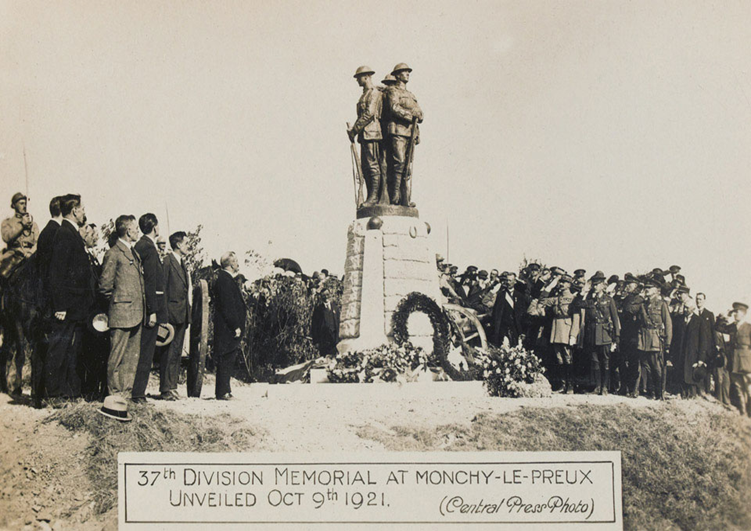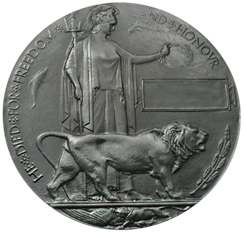HENRY JAMES KENSETT
Private, 5388, 13th Royal Fusiliers (London) Regiment
Killed in Action on 11th April 1917 at Monchy-le-Preux, France, aged 34
Buried at Row D, Grave 22, at Orange Trench British Cemetery,
Monchy-le-Preux, Pas de Calais.

Henry James Kensett was born in January 1883 at Shipley, Southwater, near Horsham, Sussex, to parents Reuben (born 1848) and Rose (née Cox, born 1851) Kensett, who had married on 13 March 1873 at New Malden, Surrey. Henry James was baptised on 13 May 1883.
He was married to Charlotte Kensett, and they lived at Majuba Hill, Hartfield Road, Forest Row. The memorial book in Holy Trinity church was signed by his widow, Charlotte, by then living at The Broadway, Forest Row.
In the 1891 census, Henry James Kensett, aged 8, a scholar, was living with his widowed mother, Rose, a charwoman, at Old House, Coolham, Shipley, Sussex, with three brothers, George, Alfred and Albert, and two sisters, Rose and Kate, and a lodger, Raymond Lakers, an agricultural labourer aged 24.
In 1901 he was living at 'Trawlers' in Shipley, where his occupation was recorded by the census as a poultryman and undergamekeeper. He was now the step-son of Raymond Lakers, who had married Rose after the death of Reuben; Raymond was by now a farm foreman and gamekeeper. The census identifies 'Trawlers' as being "on the north side of the main road leading from Cowfold to Billingshurst". The extended family now was recorded as Charles 7, Ethel and Edith 3, Henry James 19, Alfred 18, now a rural postman, Kate 13 and Sydney 12.
By the time of the 1911 census Henry James Kensett was living at Maplehurst Place, Maplehurst Farm, Nuthurst, Sussex, where he was recorded as a gamekeeper living as a boarder in the household of Samuel and Ruth Coles and their three children, Henry, Arthur and Albert.
Henry James Kensett enrolled in the army at East Grinstead and served in France and Flanders. He was probably awarded the standard three medals known as 'Pip, Squeak and Wilfred' (the 1914-1915 Star, the British war Medal, and the Victory Medal, automatically awarded to soldiers who had served and died on active service).
On the day he died, according to the Battalion War Diary, the battalion withdrew at 4.00am to Freuchy Chapel, before advancing at 10.00am to the railway line under slight enemy artillery and machine gun fire until they were checked by intense machine gun fire about 600 yards west of Monchy-le-Preaux. At this time their casualties, including Henry James Kensett, were fairly heavy. Over the two days they lost 12 officers and 240 other ranks.

Plan of Orange Trench British Cemetery
Henry James Kensett is buried in Orange Trench British Cemetery at Row D, Grave 22 (above). This cemetery in the Pas de Calais on the road from Arras to Cambrai, holds 118 burials with 59 identified casualties. Commonwealth forces were active in this area south of the River Scarpe in April 1917, during the Battle of Arras. The cemetery was made after fighting between 9 and 11 April when the 12th, 15th and 37th Divisions took Monchy-le-Preaux and the area between it and the River Scarpe.

Memorial Death Plaque
The next of kin of the war dead (except Commonwealth military personnel who were executed following a court martial) later received in the post a small bronze Memorial Death Plaque of which from 1919 over 1,150,000 were produced. Of these over 600 were for women. These plaques became known as the Dead Man's Penny or the Widow's Penny. The plaque was inscribed with "he died for freedom and honour".
In January 1918 a War Gratuity of £2 18s. 4d was authorised and paid in September 1919 together with £3 0s.0d. to his widow Charlotte.
Kevin Tillett
16 September 2017
Revised 17 January 2020

